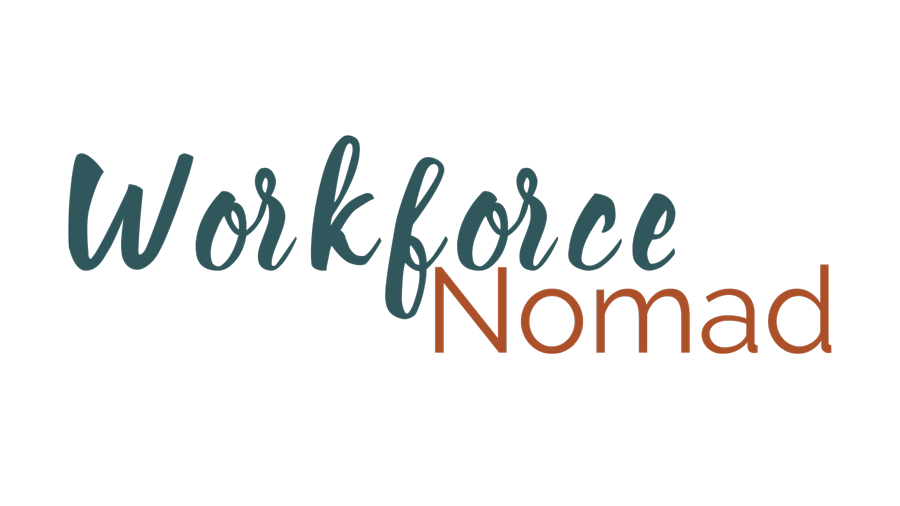
by Kathy | Feb 16, 2015 | Uncategorized
If you are leading an organization and find yourself thinking “I am adaptive because I have to be to deal with how quickly things are changing in my world every day.” Odds are you aren’t being adaptive, you are being reactive and that is having an impact on your business.
To be an adaptive leader you need to focus on 5 areas; Engage and Inspire, Vision Clarity, Trust and Empowerment, and Managing Alignment. Those sound obvious, right? But lets examine what these really mean.
Engage and Inspire– This is called “showing up and giving a shit.” When I think of the times at work when I’ve been inspired by my colleagues, it always contains an element of this. There is nothing like some one else’s infectious passion to move me to action. Start with being engaged yourself and then get really good at sharing it with others. Share it every day. If you aren’t very good at sharing this make that your number one priority.
Vision/Purpose Clarity – This isn’t just making a mission statement or signing a manifesto, this is about living it, making decisions that aren’t counter to your vision, and being purposeful about when the vision shifts (as it will). Your colleagues are watching what you do to see if it matches what you say. If you are having trouble making decisions you might have to spend some time on getting clear yourself, in which case be honest about that and do the work to get clear. Then behave in a way that will get you there. If you behave in a way that is counter, ask yourself why and be able to explain it. If you do it too often you’ve got to question your vision/purpose, maybe its in need of some refining.
Trust and Empowerment – This is not the same thing as handing out responsibility. Responsibility without the authority to make decisions and take action is useless. Responsibility and authority with an unclear purpose is downright dangerous. If you haven’t tackled the clear vision/purpose this will fail. You also may have to extend your vision for the company into clear purpose for the people filling roles. Do this work with them so it resonates. And people will feel empowered to execute. Then trust. This means you have to take a few risks because if your people make mistakes you are going to have to help fix them. This doesn’t mean you shouldn’t ask good questions and help keep your people from running off a cliff.
Managing Alignment – That brings us nicely to alignment. If you give someone a purpose they don’t “get it” or it seems misaligned with the greater purpose or contradictory to another persons purpose in the organization….here comes trouble. This means making sure everyone is on the same page and not impinging others ability to get stuff done. Help everyone with understanding everyone’s purpose and how they support each other and how it drives the greater vision.
Many companies spend money and time coming up with a nice mission statement so they can point to it and say, “that’s our vision/purpose.” But they skip every step afterward that helps draw the lines between what their people do every day to get the organization “there.” No wonder they appear to be going nowhere at a really high speed.

by Kathy | Feb 16, 2015 | Uncategorized
I gave myself a learning vacation. There were no other co-workers at these sessions, all new people from new companies coming from a variety of contexts.
Getting a chance to think on an entirely new idea created some space in my brain. Of course, it filled it up as well and I need to start practicing GTD (Getting Things Done) so I can regularly make space.
But back to the created space, my week was spent studying the practice of Holacracy, an alternative approach to organizational structure and operation. It is generally spoken of as compared (contrasted with) to a typical hierarchical structure, which is seen in most organizations. As I thought about it in the context of my company (ThoughtWorks) the comparison is a little different. While in a traditional structure power and authority is pretty clearly delineated at ThoughtWorks it is not. So in many ways implementing Holacracy would be implementing structure or at least explicit structure, which is something most of my colleagues would balk at due to an aversion to hierarchy and rules that seem box one in. But I think that aversion is not about structure but rather the pathology that comes with certain structures.
By pathology I mean those behaviors that one must enact in order to get things done that out of context might seem, well, pathological. (The politics and manipulation of the system for example or the elitist mentality, you’re either in or you are out).
What I liked about Holacracy is that as a system it doesn’t support that kind of behavior as a means to getting things done. In fact is shines a light on it and forces it out of the room.
The best thing my week did for me was give me a lens from which to think of my current situation and examine what behaviors are created by our environment which I have taken for granted. And to see if there is a way to bring some of the healthy behaviors into play and create a grass roots movement of change.

by Kathy | Jan 23, 2015 | Innovation, Leadership, Uncategorized
Smart brains, big ideas, small ideas, different agendas, different goals, politics real and imagined, put them all together and what do you get? A five headed dog. Now, try taking that for a walk.
Have you ever walked a five-headed dog? Each head wants to do a different thing, sniff this, eat that, catch a Frisbee, chase a postman… Walking that dog would feel nearly impossible. But this is what it can feel like when you are trying to integrate the thoughts, ideas, opinions and feelings of many people in a room.
I recently had the experience of walking that dog (as I regularly do) and had to remind myself what is important about leading such a beast. Show up, be present, no attachment to outcome. In this case I didn’t have a lasting stake in what the team was doing, so I was present strictly for leadership, facilitation and maybe some advice. I had to remember that the people in the room were responsible for creation of an outcome and they may not have actually agreed on what that outcome should be. Getting really clear on everyone’s goals and hidden agendas was important. “Sure Kathy, goals I can see a way to figure out, but wouldn’t hidden agenda’s by their nature, um, be hidden?” Well, yes, and you need to pay attention to what folks are saying, not saying, what their body language is doing when they are not saying anything and you’ll never really be sure what someone else is thinking by the look on their face. You need to ask probing questions and make a space where every type of person can contribute, introvert extrovert, other vert. You don’t need to figure out the hidden agenda’s just make space for them to come out or disappear.
In order to keep your energy up, remember to breathe. Be reasonable with breaks, time is limited and that’s a good thing. Don’t try to attribute like or dislike to a person based on what they appear to be thinking. You’ll make yourself crazy. Listen and be firm when taking things in a new direction, address fear with a kind calm stance and a lot of compassion (and save a little compassion for yourself). Then enjoy the ride. Because even difficult things can be fun.

by Kathy | Dec 30, 2014 | Innovation, Leadership
I used to keep a file on my desktop titled “I did this.” In this file I would put a little blurb or write up of things I accomplished. I started doing this for a couple of reasons. One, I found I would lose track of what I’d done as time passed and I needed something to look at to remind myself of how productive I’d been (it makes me happy). Two, I focus very naturally on doing things in a collaborative way, which means that I have had trouble separating out what “I” have done from what “we” have done. So much so that once when I was asked to describe what I did I used the term “we” so much that I was told I need to talk more about “I.”
As I’ve evolved in my career I’ve found that my “we” thinking and my collaboration bent are just what is needed. Helping others contribute their best selves to a project is far more valuable than me just contributing mine. I think its actually evolved to a point where helping others contribute their best is actually me being at my best. It’s an interesting and challenging shift to move from striving to be the best to helping others be their best. I like to think that everyone has something to contribute and if I can just figure out what their “thing” is and help them see it and maximize it we will all be winning.
That leads me to my title. I was reading a very brief review of “Collective Genius” (by Linda Hill), which referenced the notion that leading a culture of innovation requires an ability to lead differently since “most innovation is the result of a collaborative effort by a diverse group.” I think to be able to lead a diverse group of people you need to be able to recognize the “genius” of someone even if that someone is nothing like you. And that is a big challenge since research would indicate that we tend to like to hire and work with people like ourselves. If we do that, and thereby reject diversity on our teams, we’ll miss out on potential innovation.
Most of Corporate America focuses hiring on filling specific roles with the closest match to the job description. So you possibly fill teams with people who don’t quite fit or end up with a team that is missing some important complimentary (or even contradictory) skills. Instead, if you looked to form a team by seeing the individuals for who they are and what their “genius” is you might be able to create a team that could innovate beyond what you imagined.
Which is rather the point…
Mind you, then you have to figure out how to create the environment in which they can be successful. Give them purpose and support for the goals, etc. But if you can’t even see them I don’t know how you could possibly do the rest.

by Kathy | Jan 28, 2013 | Uncategorized
I had a great conversation today with Cyndi Mitchell in which we were talking about career, planning, not planning, breakthroughs, etc. And I was left with a phrase in my mind “apply fear to your career.”
I am a bit of a thrill seeker in my personal life. Not extremely so, I have no desire to sky dive for example, but I love to challenge myself to do new things. Jazz singing lessons that culminate in performances in a club that challenge my stage fright, aerial acrobatics lessons where I perform high above the crowd challenging my fear of heights, learning to conquer my fear of ocean swimming by learning to surf. These are challenges I can come up with easily for myself I pick a fear, set a goal and do it. I can think them up with ease and make it happen. These activities also make me feel alive and I think they make me grow into a different and better person. For some reason it is harder to create these experiences at work and take these risks. I got to have one such experience with work recently being asked (with a weeks notice) to give a Ted talk. I almost actually turned the experience down. My thought process went something like this. “What, a talk? In a week? Video to be put on YouTube no less, what do I have to say that matters? Why should anyone want to hear from me?” All of these voices came up and I gave myself permission to not do it. But then I felt sad imagining not doing it. I already saw it would be a missed opportunity. I knew I would regret it and wonder, what if I hadn’t let my fear prevent me. So I bit the bullet and said yes. I’m so glad I did. I’m proud of what I did (though of course would like to improve it) and I think it made me better, different. Now how about I create a plan to do something like this more intentionally. What if I dream about something I’m a little afraid of doing and then try to make that happen. That talk fell in my lap which is great, but what if I apply my fears to create a new challenge for myself at work? What will I do?










